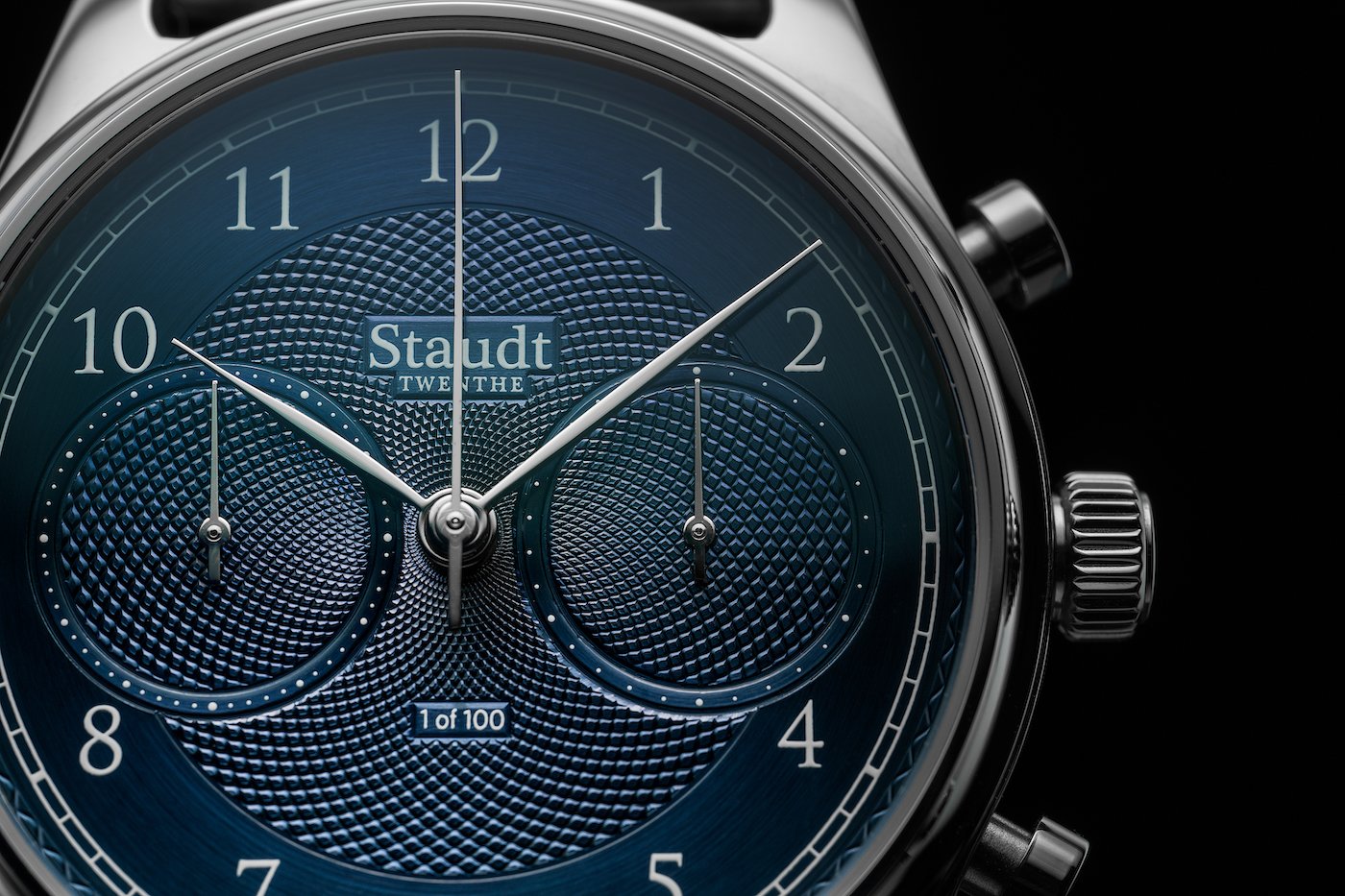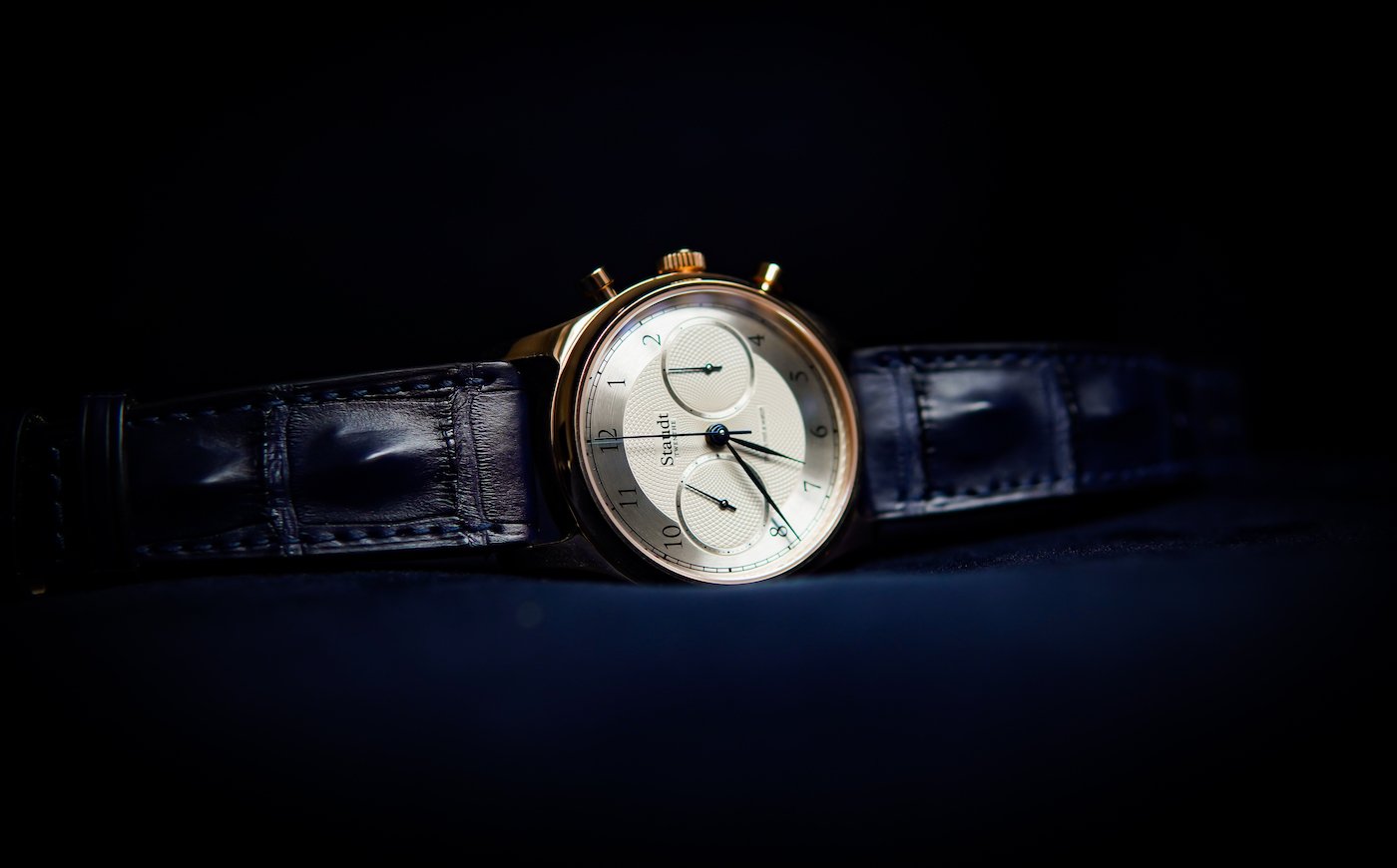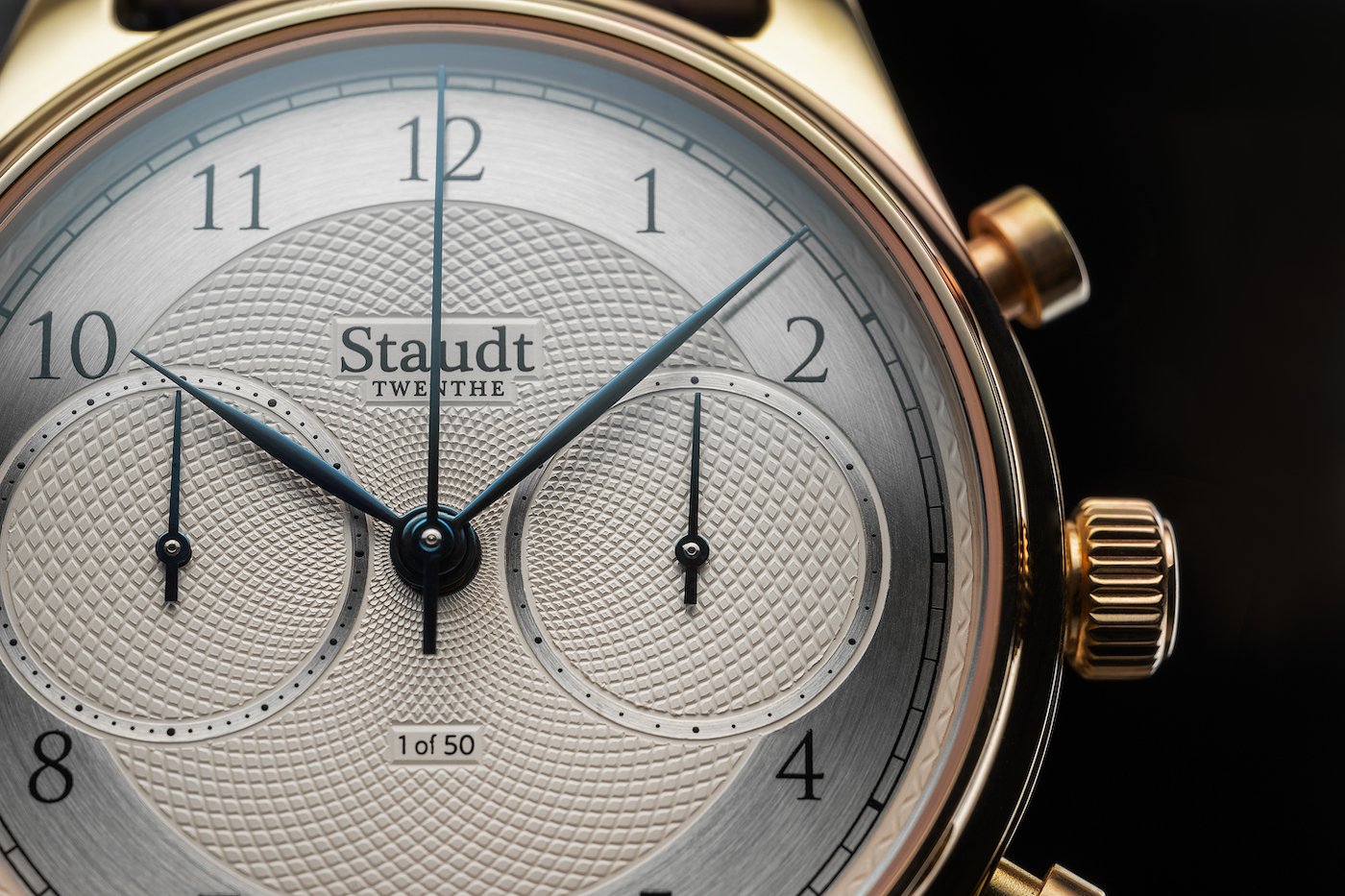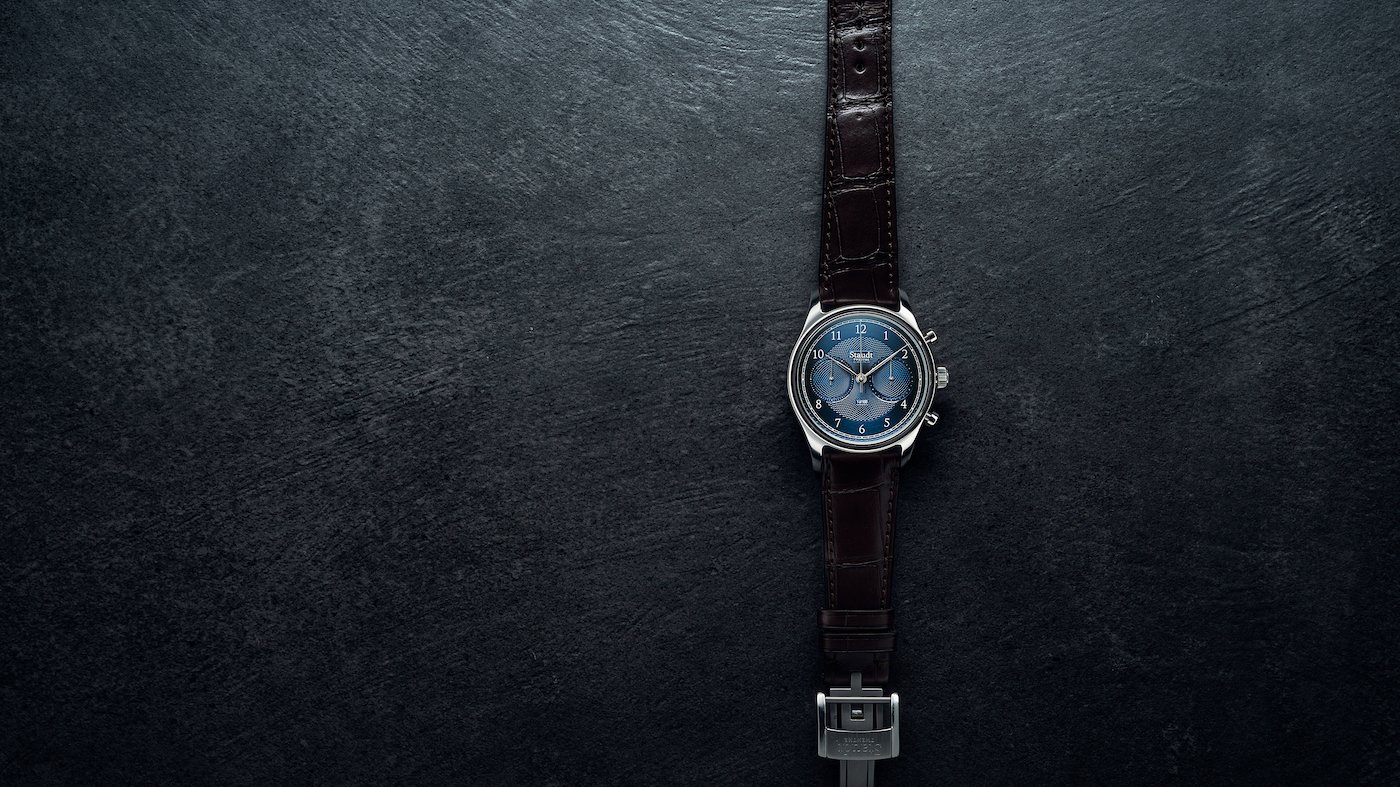he new Staudt Guilloche Chronograph comes in two versions: the rose gold version is limited to 50 pieces and the steel version to 100 pieces. This new timepiece is the most prestigious of the Staudt collection. The Praeludium-collection was founded during the classical music studies of the young Yvo Staudt in Italy. It was his personal project until the moment people asked him to share his creation. His first timepiece turned out into a collection of watches that all share the roots of his venture in Italy.
“As a young boy I wanted to study classical music on my accordion,” explains Yvo Staudt, Founder and owner Staudt Twenthe Watches. “I had an urge to seek the boundaries of the possibilities of this extraordinary instrument - and my own capabilities. As I step by step succeeded in reaching my goals, the instruments I played became better and better - to the point I acquired my current instrument, it is superior to whatever skill I will ever reach. ”
“It is like a perfectly shining mirror, it shows all the imperfections just the way they are. There is nowhere to hide. The rose engine is like my accordion, a mirror. There is nowhere to hide for imperfections. Once the solid silver dial blank is lacquered, there is no way back. It’s up to the skills of the craftsman. For him the dial is like an Aria of Bach. He can dream the notes. So the details are in between: the intonations, breaks and starts. There is no Guilloche dial the same, every dial is like a unique canvas.”
Yvo Staudt visited the atelier of Jochen Benzinger, to learn everything about Guilloche technique (check the video here). Guilloche is a geometric pattern that has been used to decorate wood and ivory since the 16th century. The pattern originally symbolised the position of the sovereign, everything revolved around the king. Many kings, therefore, learned this craft on a rose engine, as shown here to the right. It was only in the 18th century that this technique was used for the first time on the dial of a watch by Abraham-Louis Breguet. Today there are only a few craftsmen who have mastered this special technique.

The rose engine is a special lathe with the peculiarity that it is not the milling cutter that moves over the dial, but the other way round. The dial is fixed in lacquer on a shaft with several round disc-shaped rosettes with 72 notches. The shaft is tensioned by a large spring, and the notches in the rosettes allow the entire shaft to slide back and forth when turned. A hand-carved cutting tool transfers the movement of the axle to the solid silver dial. Engraving a single dial takes about 9 hours.
The guilloche dial is held over a flame, which brings out the fine silver, which is then captured by a chemical bath. This process is repeated seven times, to create a nice even layer. The dial is made of 925 Sterling Silver, which means that 925 of the 1000 particles consist of (fine) silver. The fine silver gives a white layer over the dial. Next, the rings in the dial are polished on a lathe. The blue Guilloche dials are galvanised. As a final step, the numbers, logo and minute rails are printed.

The Guilloche Chronograph with a frosted dial has a watch case that measures 41 millimetres in diameter; the thickness is 13.6 millimetres and is crafted from solid 18 carat rose gold (4N). Both on the front side as the backside the watch is fitted with a glass of sapphire crystal with a double anti-reflection coating. The leaf-shaped hands are made of stainless steel and blued by using heat.
The automatic movement has a chronograph complication and is considered as one of the most reliable movements. The balance wheel makes 28.800 beats per hour, and the calibre contains 27 jewels. Its bridges are decorated with perlage, côtes de Genève and the screws are blued by using heat. The rotor is decorated with circular côtes de Genève and coated with 18ct. rose gold. This version is limited to 50 pieces and priced at 17,989 euro.

As for the Guilloche Chronograph in galvanic blue, it has a watch case that measures 41 millimetres in diameter; the thickness is 13.6 millimetres and is made of stainless steel. Both on the front side as the backside the watch is fitted with a glass of sapphire crystal with a double anti-reflection coating. The leaf-shaped hands are made of stainless steel and polished by hand.
The automatic movement has a chronograph complication and is considered as one of the most reliable movements. The balance wheel makes 28.800 beats per hour, and the calibre contains 27 jewels. Its bridges are decorated with perlage, côtes de Genève and the screws are blued by using heat. The rotor is decorated with circular côtes de Genève and coated with 18 carat rose gold. This version is limited to 100 pieces and prices at 5,989 euro.











